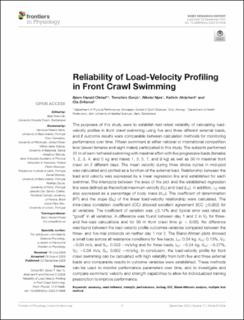| dc.contributor.author | Olstad, Bjørn Harald | |
| dc.contributor.author | Gonjo, Tomohiro | |
| dc.contributor.author | Njøs, Nikolai | |
| dc.contributor.author | Abächerli, Kathrin | |
| dc.contributor.author | Eriksrud, Ola | |
| dc.date.accessioned | 2020-10-20T14:35:36Z | |
| dc.date.available | 2020-10-20T14:35:36Z | |
| dc.date.created | 2020-09-25T09:53:00Z | |
| dc.date.issued | 2020 | |
| dc.identifier.citation | Frontiers in Physiology. 2020, 11, 574306. | en_US |
| dc.identifier.issn | 1664-042X | |
| dc.identifier.uri | https://hdl.handle.net/11250/2683984 | |
| dc.description | This is an open-access article distributed under the terms of the Creative Commons Attribution License (CC BY). The use, distribution or reproduction in other forums is permitted, provided the original author(s) and the copyright owner(s) are credited and that the original publication in this journal is cited, in accordance with accepted academic practice. No use, distribution or reproduction is permitted which does not comply with these terms. | en_US |
| dc.description.abstract | The purposes of this study were to establish test-retest reliability of calculating load-velocity profiles in front crawl swimming using five and three different external loads, and if outcome results were comparable between calculation methods for monitoring performance over time. Fifteen swimmers at either national or international competition level (seven females and eight males) participated in this study. The subjects performed 25 m of semi-tethered swimming with maximal effort with five progressive loads (females 1, 2, 3, 4, and 5 kg and males 1, 3, 5, 7, and 9 kg) as well as 50 m maximal front crawl on 2 different days. The mean velocity during three stroke cycles in mid-pool was calculated and plotted as a function of the external load. Relationship between the load and velocity was expressed by a linear regression line and established for each swimmer. The intercepts between the axes of the plot and the established regression line were defined as theoretical maximum velocity (V0) and load (L0). In addition, L0 was also expressed as a percentage of body mass (rL0). The coefficient of determination (R2) and the slope (Slv) of the linear load-velocity relationship were calculated. The intra-class correlation coefficient (ICC) showed excellent agreement (ICC ≥0.902) for all variables. The coefficient of variation was ≤3.14% and typical error was rated as “good” in all variables. A difference was found between day 1 and 2 in V0 for three- and five-load calculations and for 50 m front crawl time (p < 0.05). No difference was found between the load-velocity profile outcomes variables compared between the three- and five-trial protocols on neither day 1 nor 2. The Bland-Altman plots showed a small bias across all resistance conditions for five loads, L0: 0.04 kg, rL0: 0.13%, V0: −0.03 m/s, and Slv: 0.003 −m/s/kg and for three loads, L0: −0.24 kg, rL0: −0.27%, V0: −0.04 m/s, Slv: 0.002 −m/s/kg. In conclusion, the load-velocity profile for front crawl swimming can be calculated with high reliability from both five and three external loads and comparable results in outcome variables were established. These methods can be used to monitor performance parameters over time, and to investigate and compare swimmers’ velocity and strength capabilities to allow for individualized training prescription to improve performance. | en_US |
| dc.language.iso | eng | en_US |
| dc.subject | accuracy | en_US |
| dc.subject | semi-tethered | en_US |
| dc.subject | strength | en_US |
| dc.subject | performance | en_US |
| dc.subject | testing | en_US |
| dc.subject | ICC | en_US |
| dc.subject | Bland-Altmann analysis | en_US |
| dc.subject | multiple trial method | en_US |
| dc.title | Reliability of load-velocity profiling in front crawl swimming | en_US |
| dc.type | Peer reviewed | en_US |
| dc.type | Journal article | en_US |
| dc.description.version | publishedVersion | en_US |
| dc.rights.holder | © 2020 Olstad, Gonjo, Njøs, Abächerli and Eriksrud | en_US |
| dc.source.pagenumber | 8 | en_US |
| dc.source.volume | 11 | en_US |
| dc.source.journal | Frontiers in Physiology | en_US |
| dc.identifier.doi | 10.3389/fphys.2020.574306 | |
| dc.identifier.cristin | 1833331 | |
| dc.description.localcode | Institutt for fysisk prestasjonsevne / Department of Physical Performance | en_US |
| dc.source.articlenumber | 574306 | en_US |
| cristin.ispublished | true | |
| cristin.fulltext | original | |
| cristin.qualitycode | 1 | |
